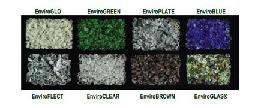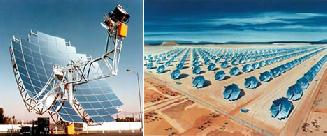Los Angeles faces challenges with water scarcity that affect its residents and environment. With a growing population, the demand for this resource increases, pushing urban planners and architects to find sustainable solutions. Water recycling systems offer a practical approach, helping the city use resources more efficiently. These practices support conservation and improve the livability of communities in a drought-prone region.
Architectural designs are increasingly incorporating water recycling systems, including greywater recycling, rainwater harvesting, and blackwater treatment. Many architecture firms in Los Angeles are at the forefront of integrating these solutions, demonstrating innovative approaches to maximize resource efficiency in both residential and commercial projects. Exploring how these systems are applied in modern designs opens new opportunities to enhance urban infrastructure and meet environmental challenges.
Types of Water Recycling Systems
Different water recycling systems meet specific water management needs. Greywater recycling reuses gently used water from sinks, showers, and washing machines for irrigation and toilet flushing, saving potable water and reducing strain on wastewater systems. Rainwater harvesting captures and stores rainwater from roofs and surfaces, providing an alternative water source for irrigation and non-potable uses.
Blackwater treatment handles highly contaminated wastewater from sources like toilets, kitchens, and laundries. It can be processed for safe reuse, including irrigation or even potable water applications in advanced designs. These systems are inherently flexible, easily retrofitting existing buildings with dual plumbing and strategic storage solutions.
Addressing Water Scarcity Through Sustainable Design
Drought forces Los Angeles to address water scarcity. Urbanization worsens the issue, with more people placing greater demands on a limited water supply. Sustainable design practices have gained traction among architects and planners as a response. Innovative water management strategies are essential for creating urban ecosystems that can withstand climate challenges.
Municipal policies play a significant role in advancing water-efficient technologies. Incentives for developers and property owners encourage the adoption of water recycling systems. Regulations that emphasize sustainable architecture make water conservation a key part of design. By embracing these principles, Los Angeles has the potential to transform its architectural scene, turning water scarcity into an opportunity for innovative, eco-friendly design.
Innovative Integration in Architectural Designs
Incorporating water recycling systems into designs calls for creative approaches. Dual plumbing keeps recycled water separate from potable sources, allowing for safe and efficient use. This system enables buildings to utilize greywater for tasks such as toilet flushing and irrigation, decreasing reliance on fresh water. Advanced filtration systems treat collected water, improving its quality and broadening its applications.
Complementary features like green roofs and permeable surfaces also support water recycling systems. Green roofs absorb rainwater for reuse, while promoting biodiversity and improving urban cooling. Permeable surfaces reduce runoff by allowing rainwater to seep into the ground, combining natural resources with technology to enhance urban sustainability and support water conservation in Los Angeles.
Benefits and Challenges of Water Recycling
Water recycling systems offer many benefits. They conserve water, reduce wastewater discharge, and protect waterways from pollution. They also lower water bills and provide financial incentives for property owners. Communities using these systems become more resilient, supporting ecosystems and fostering sustainability.
However, challenges remain. High installation costs can discourage property owners, despite long-term savings. Regulatory complexities and unclear building codes can complicate implementation. Public awareness about the benefits and technologies of water recycling is often limited, slowing adoption. Outreach and education can help bridge this gap, promoting broader understanding and acceptance of these innovative systems.
Architects Leading the Way in Water Conservation
Architects play a key role in promoting sustainable practices by integrating water recycling systems into designs. They work with engineers, planners, and environmental specialists to create efficient, aesthetically pleasing frameworks. Collaboration often leads to innovative ideas that improve water management and urban design.
Education is another important part of an architect’s role. By explaining the benefits and technology of water recycling, architects can encourage clients to adopt these systems. Workshops, informational sessions, and consultations can foster greater understanding of sustainable design. Architects setting new standards inspire future projects and a cultural shift toward responsible water use in Los Angeles.
Los Angeles sees significant water shortages, demanding innovative solutions. Water recycling systems, such as greywater reuse and rainwater harvesting, can mitigate these challenges by reducing dependency on potable water. Architects, engineers, and policymakers must collaborate to integrate these systems into urban designs. Builders should prioritize dual plumbing installations and advanced filtration technologies for effective implementation. Municipal incentives, such as tax breaks or subsidies, can encourage adoption. Public awareness campaigns are vital to fostering community acceptance. With these strategies, Los Angeles can transform its infrastructure into a model of sustainability, improving water resilience and the overall quality of urban life.




